Prodrugs for the treatment of neglected diseases
- PMID: 18463559
- PMCID: PMC6245083
- DOI: 10.3390/molecules13030616
Prodrugs for the treatment of neglected diseases
Abstract
Recently, World Health Organization (WHO) and Medicins San Frontieres (MSF) proposed a classification of diseases as global, neglected and extremely neglected. Global diseases, such as cancer, cardiovascular and mental (CNS) diseases represent the targets of the majority of the R&D efforts of pharmaceutical companies. Neglected diseases affect millions of people in the world yet existing drug therapy is limited and often inappropriate. Furthermore, extremely neglected diseases affect people living under miserable conditions who barely have access to the bare necessities for survival. Most of these diseases are excluded from the goals of the R&D programs in the pharmaceutical industry and therefore fall outside the pharmaceutical market. About 14 million people,mainly in developing countries, die each year from infectious diseases. From 1975 to 1999,1393 new drugs were approved yet only 1% were for the treatment of neglected diseases[3]. These numbers have not changed until now, so in those countries there is an urgent need for the design and synthesis of new drugs and in this area the prodrug approach is a very interesting field. It provides, among other effects, activity improvements and toxicity decreases for current and new drugs, improving market availability. It is worth noting that it is essential in drug design to save time and money, and prodrug approaches can be considered of high interest in this respect. The present review covers 20 years of research on the design of prodrugs for the treatment of neglected and extremely neglected diseases such as Chagas' disease (American trypanosomiasis), sleeping sickness (African trypanosomiasis), malaria, sickle cell disease, tuberculosis, leishmaniasis and schistosomiasis.
Figures

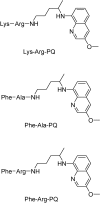

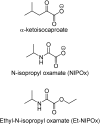












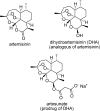

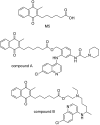




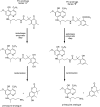



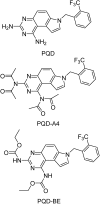






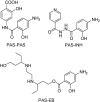

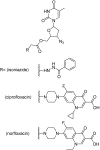
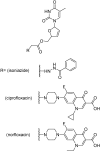
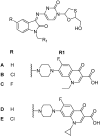









Similar articles
-
Malaria and tuberculosis as diseases of neglected populations: state of the art in chemotherapy and advances in the search for new drugs.Mem Inst Oswaldo Cruz. 2020 Oct 5;115:e200229. doi: 10.1590/0074-02760200229. eCollection 2020. Mem Inst Oswaldo Cruz. 2020. PMID: 33053077 Free PMC article. Review.
-
DB-289 Immtech International.IDrugs. 2003 Nov;6(11):1086-93. IDrugs. 2003. PMID: 14600842 Review.
-
Dual Inhibition of Parasitic Targets: A Valuable Strategy to Treat Malaria and Neglected Tropical Diseases.Curr Med Chem. 2022;29(17):2952-2978. doi: 10.2174/0929867328666210810125309. Curr Med Chem. 2022. PMID: 34375176 Review.
-
Opportunities and challenges in antiparasitic drug discovery.Nat Rev Drug Discov. 2005 Sep;4(9):727-40. doi: 10.1038/nrd1824. Nat Rev Drug Discov. 2005. PMID: 16138106 Review.
-
[Endemic tropical diseases: comtemporary health problem due to abandoned diseases in the developing world].Kansenshogaku Zasshi. 2006 Sep;80(5):469-74. doi: 10.11150/kansenshogakuzasshi1970.80.469. Kansenshogaku Zasshi. 2006. PMID: 17073258 Review. Japanese.
Cited by
-
Butyrate histone deacetylase inhibitors.Biores Open Access. 2012 Aug;1(4):192-8. doi: 10.1089/biores.2012.0223. Biores Open Access. 2012. PMID: 23514803 Free PMC article.
-
Synthesis of potent inhibitors of β-ketoacyl-acyl carrier protein synthase III as potential antimicrobial agents.Molecules. 2012 Apr 25;17(5):4770-81. doi: 10.3390/molecules17054770. Molecules. 2012. PMID: 22534662 Free PMC article.
-
Tuberculosis in the era of infection with the human immunodeficiency virus: assessment and comparison of community knowledge of both infections in rural Uganda.BMC Int Health Hum Rights. 2012 Dec 20;12:36. doi: 10.1186/1472-698X-12-36. BMC Int Health Hum Rights. 2012. PMID: 23254144 Free PMC article.
-
Anti-Trypanosoma cruzi and anti-leishmanial activity by quinoxaline-7-carboxylate 1,4-di-N-oxide derivatives.Parasitol Res. 2014 Jun;113(6):2027-35. doi: 10.1007/s00436-014-3850-8. Epub 2014 Apr 2. Parasitol Res. 2014. PMID: 24691716
-
Harnessing the 12 Green Chemistry Principles for Sustainable Antiparasitic Drugs: Toward the One Health Approach.ACS Infect Dis. 2024 Jun 14;10(6):1856-1870. doi: 10.1021/acsinfecdis.4c00172. Epub 2024 May 9. ACS Infect Dis. 2024. PMID: 38724015 Free PMC article. Review.
References
-
- Medecins Sans Frontieres Drugs for Neglected Diseases Initiative: Teaming up to address neglect. Mar 12, 2003. [in Nov. 2007]. Accessed from: www.accessmed.msf.org.
Publication types
MeSH terms
Substances
LinkOut - more resources
Full Text Sources
Other Literature Sources
Miscellaneous

